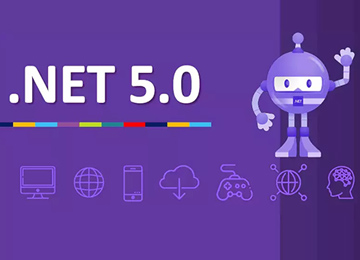What is .NET 5?

What is .Net 5
.NET 5, the successor of .NET Core 3.1 and .NET Framework 4.8, aims to provide .NET developers with a new cross-platform development experience.
.NET 5 is the future of .NET Core and is almost a complete reimagining of the old .NET Framework. .NET 5 is the first significant update since the 2016 release of the .NET Core. Both .NET Core and Framework were maintained in parallel, allowing you to choose between one and leveraging .NET Standard to make shared libraries between the two. .NET Framework is deprecated. This means you can only use .NET Framework as long as your operating systems (for example, Windows Server 2019) still support it. And with Microsoft shortening its support lifecycles, your operating system end-of-life will come sooner than you may think.
Although the transition from .NET Core to .NET 5 is less complex than the migration from .NET Framework, there are some concerns to consider and some great new features of .NET 5.
.NET 5 includes:
-
Side-by-side installations
You can install a new version and not worry about breaking existing apps -
.NET MAUI, the Universal UI
You have to know that .NET 5 is bringing a new way to build cross-platform user interfaces. Thanks to the .NET Multi-platform App UI framework, also known as .NET MAUI), you will be able to create user interfaces for Android, iOS, macOS, and Windows with a single project. - No Longer Supported Technologies
The last thing you are learning about .NET 5 concerns what is no longer supported. As said above, the architectural review and the attempt to make .NET 5 a solid cross-platform programming framework led to removing a few features supported in .NET Framework. Let’s take a quick look at the removed features and the possible alternatives. - Web Forms
For a long time, ASP.NET Web Forms has been the primary technology to build dynamic web UIs. However, it is not a secret that its lifetime was closely bound to .NET Framework’s destiny. .NET Core doesn’t support Web Forms, so the fact it is no longer supported in .NET 5 shouldn’t actually be news. - Windows Communication Foundation (WCF)
Even WCF, the traditional communication framework for Windows, is going to be deprecated. This may appear a bit shocking for the developers that have used it to build their service-oriented applications. However, it is pretty understandable if you realize that the primary goal of .NET 5 is becoming a cross-platform framework. - Windows Workflow Foundation
Finally, .NET 5 will not even include Windows Workflow Foundation, the workflow engine technology available in .NET Framework. There is no official replacement for this technology. However, you can use an open-source porting project, CoreWF, to attempt moving your existing workflows on .NET 5 or creating new ones.
